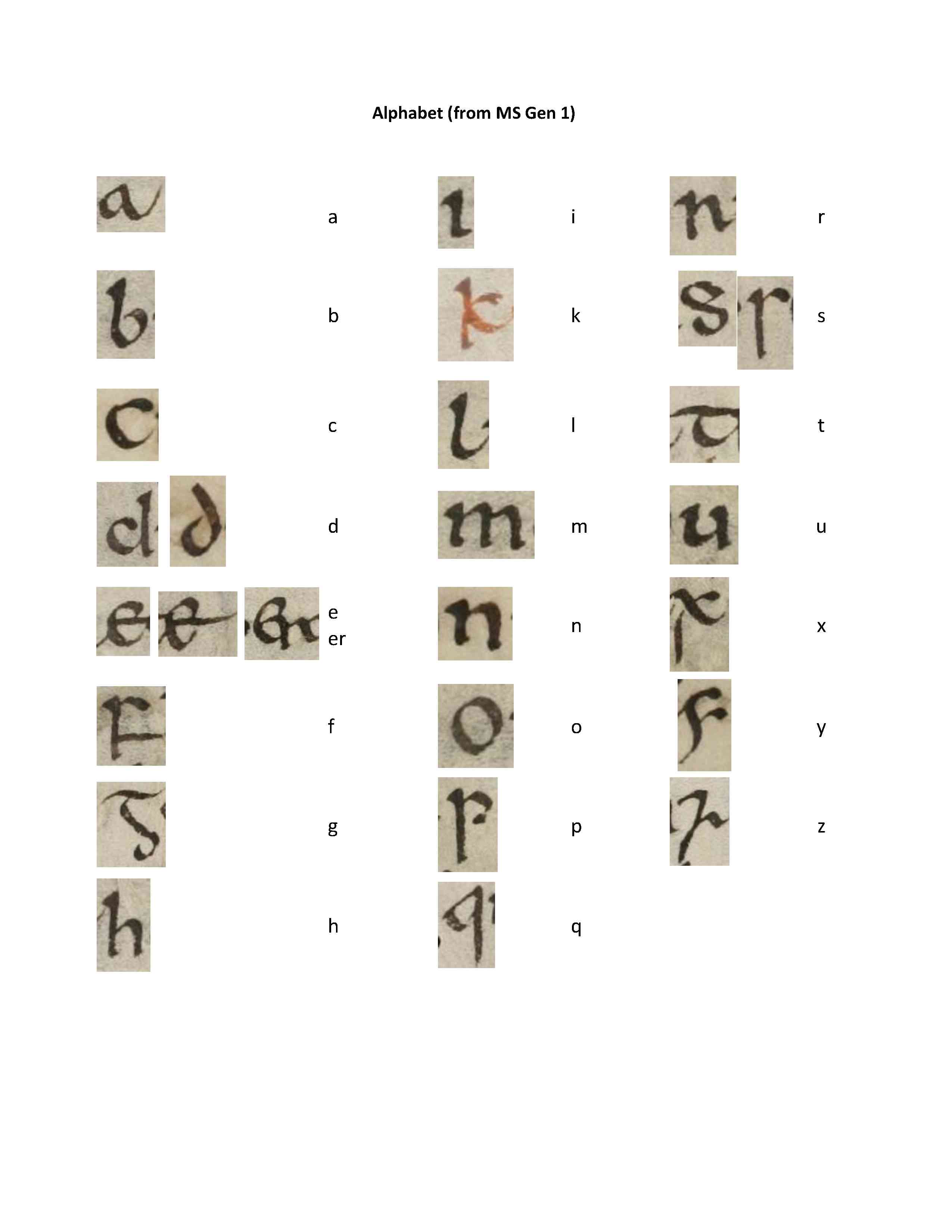40
Transcription Guidelines
If you are already familiar with early Irish script - wonderful! Feel free to check the guidelines below and get started.
If you are new to this script, you may want to study the cheat sheet of letter forms used in this manuscript first (see below).
Page instructions: To save your work, use the Save button. When the transcription is complete, select the Done button.
Transcription Conventions
Line Breaks: Hit Enter once after each line ends. Two returns indicate a new paragraph, whether indicated by a blank line or other spacing in the original.
Columns: Add [col.a] at the start of the first column and [col.b] at the start of the second.
Titles: Chapter headings in red should be marked with [rubric]heading[rubric].
Spelling: Transcribe the original spelling of the text. Do not regularize any words. If you are uncertain about your transcription, you can frame the word or letters with brackets and add a question mark, e.g. [abb?].
Capitalization: Only capitalise rubricated letters (coloured or dotted letters).
Names: If you recognize names, transcribe the original spelling and mark them as [name]colum[name].
Punctuation: Use original punctuation when possible. Transcribe the punctus elevatus (upside down ;) as ; . Transcribe a line/space filler (often // in the manuscript) as [cfe].
Buttons
A number of buttons are available to allow you to mark common transcription problems easily:
Unclear Use this button to select text that is unclear or illegible. Type actual letters only where legible and for those you cannot read type as many dots as you think there are letters, e.g. l..os.
Deletion Marks text that has been removed by erasure.
Strikethrough Marks text that has been struck out or cancelled.
Addition Marks text inserted after-the-fact (clearly in a different ink or hand).
Superscript and Subscript Letter added super- or subscript by the original scribe (as far as can be determined).
Marginalia If you spot entries in the margins, add them at the bottom of the page and mark them as marginalia using the button.
Common Abbreviations, suspensions, and ligaturesEarly Irish scribes tended to use lots of abbreviations and joined-up letters (known as compendia, ligatures, and digraphs). This made writing faster, but it makes reading a little more challenging for us! The list below offers some guidelines for the most common examples in this manuscript. Many of these are also commonly used in Latin manuscripts produced elsewhere, but some are specific to Ireland. Most abbreviations are suspensions of word endings, often indicated by symbols such as the example for bus below. Contractions of words by omitting letters are often indicated using a horizontal stroke above the letter or letters. There is also a specific, curled stroke to indicate -m.
- Transcribe expansions and suspensions by putting the supplied letters in parentheses (text), e.g. eccl(es)ia.
- To train yourself to become familiar with specific compendia (single-symbol shorthand forms) and Tironian notae, I invite you to mark these with (( )), e.g. ((et)) for a ligatured et (like the ampersand) or ((eius)) below.
Letter forms cheat sheet

Most common compendia and abbreviations

Another very helpful resource is the Tionscadal na Nod website by the van Hamel stichting. (More resources on the help page!)
Finally, a digital edition of most of the text is available at CELT in case you get stuck and need some guidance!
"Autolink" will suggest subjects certain words could be linked to or you can use double braces to link subjects. [[Jane Doe]] will link the text "Jane Doe" to the subject Jane Doe, while [[Jane Doe|Jane]] will link the text "Jane" to the subject Jane Doe. We recommend that linking be left to an editor after the initial transcription is made.